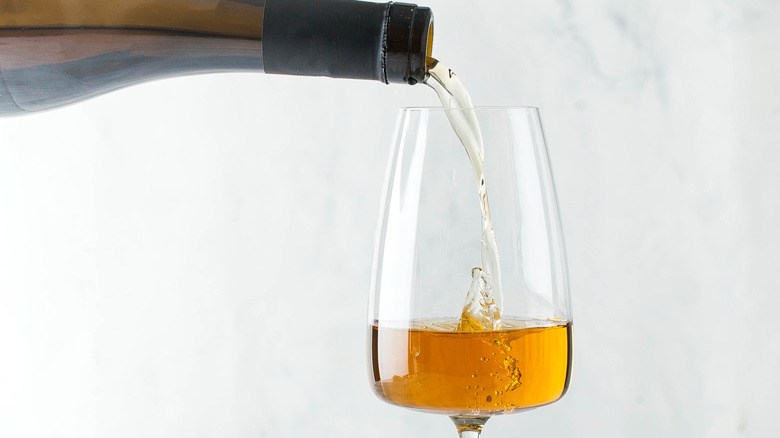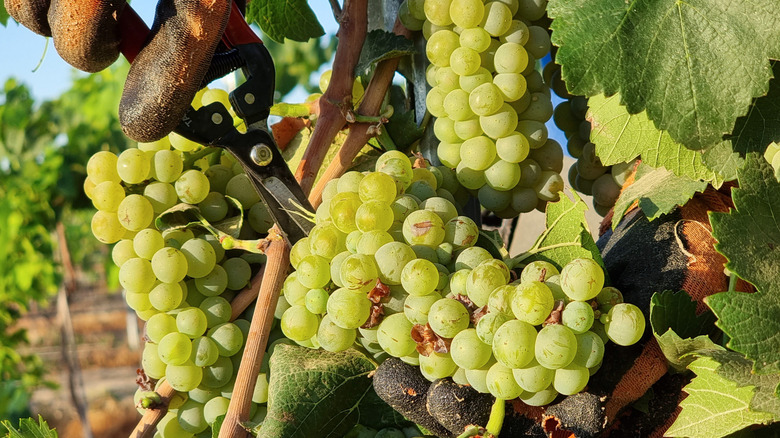What Makes Slovenian Orange Wine Unique?
When you go to a restaurant that has a wine list, you can expect its selections to be grouped by reds, whites, roses, and sparkling. Extensive lists might be separated into varietals, but for the most part, these groups are standard. What you never see is a section listing orange wines. Yet, orange wine is a legitimate type of vino. Not surprisingly, orange wine has a peach or orange-colored tint to it, not unlike rosé wines which may make you wonder if orange wine is just a rosé. Not so much. Although the assumption is understandable, it turns out that the two wines are made very differently.
There probably isn't a section at your favorite wine and spirits store dedicated to orange wines because the varietal has only come trotting (as opposed to sprinting) onto the wine scene within the last two decades, even though it was likely made in ancient times. Winemakers in many parts of the world make orange wine but in small numbers. The largest amount of orange wine comes from northeastern Italy (the Friuli-Venezia Giulia region) and right across the border in western Slovenia in the Primorska region. In these areas, the wines have been a favorite among locals since the 1980s, but only recently has the rest of the wine-drinking world taken notice.
Green grapes give orange wine its color
To make rosé wines, red grapes are crushed, releasing the white-colored juice, which is then macerated or left to soak with the grape skins for a short period of time. It is the red skins that give rosés their rosy hue. This is exactly the way red wines are made, only the maceration period is much longer. When white wine is made, green grapes are crushed, and the skins, seeds, and stems are immediately discarded. From here, the grapes are pressed, yeast is added, and the process of fermentation begins. With orange wine, green grapes are also used, but the green skins and seeds are left to macerate with the juice. The solids are what give orange wine its unique color.
These skins and seeds also give orange wines what white wines don't, and red wines do have – tannins, which make a wine dry. Slovenian orange wines have often been described as bold, a characteristic not often associated with lighter-colored counterparts. They have interesting aromas ranging anywhere from hazelnut to dried orange to juniper, with flavors sometimes equated to those elements found in sour fruit beers. Because of its robust structure, orange wine pairs well with highly spiced dishes like curries, Korean, and Ethiopian food, along with meats and fish. They are best served cool but not cold; the happy place is cooler than you'd serve a red but warmer than you would a white or rose.

